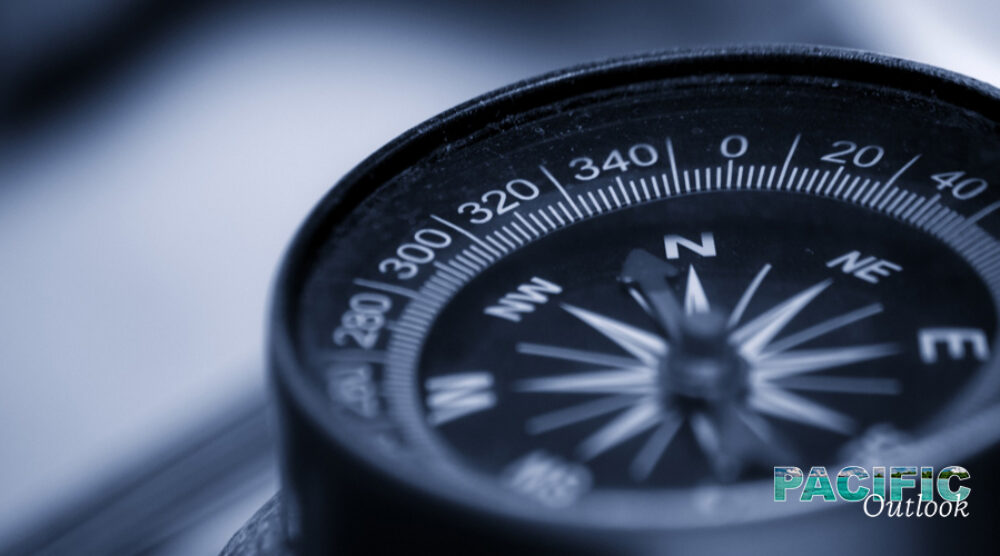PETER LAYTON, WESLEY MORGAN AND TESS NEWTON CAIN |
At the 2019 Pacific Islands Forum (PIF) Leaders meeting in Tuvalu, member countries agreed to develop the 2050 Blue Pacific strategy. The draft will be considered at the 2021 PIF Leaders Summit in Fiji. To assist with this, the Australian Department of Foreign Affairs and Trade (DFAT) sought answers to several carefully focussed questions. The Griffith Asia Institute, given its long-standing involvement in Pacific islands research made a submission which is summarised below.
DFAT: What are the major challenges facing our region as we work together to achieve the vision for a Blue Pacific Continent by 2050?
The PIF and other Pacific-led groupings have achieved much in providing regional diplomatic leadership on the two major contemporary challenges: climate change and geostrategic competition. Between now and 2050 there is an opportunity to build on these accomplishments and galvanise greater ambition and action, particularly when it comes to addressing climate change. However, there is a risk that latent fault lines between members of the PIF could undermine the bloc’s influence.
When it comes to geostrategic competition, Pacific island countries are affected by changes in the wider international system rather than only competition between China and the USA. Chinese and US interest in the region fluctuates but the international system within which the PIF functions endures, offering more diplomatic opportunities.
Other challenges include those associated with stimulating and maintaining a unique economic and social development process that will be inclusive and sustainable, and will nurture Pacific island livelihoods and cultures. There will be ongoing tensions associated in progressing the benefits of working together (the ‘regionalism project’) against the backdrop of the domestic political realities of delivering at national and sub-national levels.
Importantly, by 2050, the Pacific islands region population is expected to increase by some 75 per cent. This will occur unevenly. Whilst the ‘youth bulge’ of the Pacific (especially Melanesia) has been recognised for some time, there is also now an increasingly ageing population. This has significant economic and social effects, such as an increased incidence of non-communicable age-related diseases.
DFAT: How might these challenges impact on our region over the next 30 years to 2050?
Global warming modelling indicates several future negative impacts are probable. These include a change in the frequency, distribution and severity of tropical cyclones. In addition, Cook Islands, Fiji, Niue, Samoa, Solomon Islands, Tonga, Tuvalu and Vanuatu will experience more severe storms more often. Sea level rises are expected to contaminate some islands’ water supplies through saltwater intrusions, negatively affecting agriculture. Lastly, the movement of fish stocks towards cooler higher latitude waters and further east will lead to significant decreases in catches in the Exclusive Economic Zones (EEZs) of several Pacific island countries. This will create considerable economic turbulence.
In being a political matter, geostrategic competition impacts are more uncertain than global warming which is a well-modelled scientific phenomenon. Thinking about geostrategic issues is better handled by devising scenarios of what might occur. Four potential “Pacific futures” were devised:
- Multilateral future – “we can secure our future for ourselves”
- Networked future – “we can secure our future if we turn a good profit”
- Fragmented future – “my island first and foremost”
- Multipolar future – “we do as we are told”
DFAT: How might COVID-19 impact on our region’s development trajectory to 2050?
The COVID-19 pandemic has put ongoing challenges in sharper relief. For example, tourism has collapsed across the region. This has prompted a number of countries to revisit previous debates about economic diversification – e.g. by re-engaging with agriculture. COVID has further revealed that investment in regional health infrastructure has been lacking.
We anticipate other regional impacts. The downturn in economic activity may undermine governments’ ability to maintain service delivery, already a challenge in some Pacific island countries. In this, the significance of debt needs greater recognition. Several countries (PNG, Samoa, Tonga) are faced with servicing high debt loads with reduced sources of income.
DFAT: How can PIF members work together to address these challenges?
By 2050, global warming impacts will be both much worse and more apparent. Worryingly, today’s major aid donor states may focus on their own domestic responses to global warming impacts rather than be concerned about helping distant Pacific islands. Accordingly, it’s prudent to build in greater robustness to shocks and enhance self-reliance. For this, the two key areas are governance and connectivity.
In particular, the region’s small island communities require enhanced connectivity to allow them to access support and resources from others within the region and beyond as needed. This is not just physical infrastructure but also intangible people-to-people links. Broad and deep connectivity brings an enduring social cohesion which underpins disaster preparedness, government response and national development.
The unique ‘Pacific Way’ of prosecuting regional diplomacy must also be leveraged to spur global action on climate change. The PIF states should aim to achieve by 2050 an integrated, net-zero emissions, carbon neutral, regional economy.
Finally, Forum states should work together to protect Pacific maritime sovereignty, including to secure ongoing recognition of Pacific maritime EEZs in the face of sea-level rise induced by global warming.
Dr Peter Layton, Dr Wesley Morgan and Dr Tess Newton Cain, Griffith Asia Institute.








